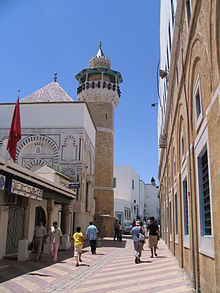During the 7th century the region of Tunisia was conquered by Arab troops led by the Ghassanid general Hassan Ibn Numan. The city had the natural advantage of coastal access, via the Mediterranean, to the major ports of southern Europe. Early on, Tunis played a military role — the Arabs recognized the strategic importance of its proximity to the Strait of Sicily. From the earliest years of the 8th century, Tunis was the chef-lieu of this area: it became the Arabs' naval base in the western Mediterranean, and took on considerable military importance, and with a strategic location, the city grew, and with it grew the mosques for the Muslims to pray in.




- Bab Jazira Mosque
- El Jedid Mosque
- Hammouda Pacha Mosque
- Sabkha Mosque
- Saheb Ettabaâ Mosque
- Sidi Belhassen El Halfaoui Mosque
- Sidi Mahrez Mosque
- Soubhan Allah Mosque
- Youssef Dey Mosque


Well, that’s interesting to know that Psilotum nudum are known as whisk ferns. Psilotum nudum is the commoner species of the two. While the P. flaccidum is a rare species and is found in the tropical islands. Both the species are usually epiphytic in habit and grow upon tree ferns. These species may also be terrestrial and grow in humus or in the crevices of the rocks.
View the detailed Guide of Psilotum nudum: Detailed Study Of Psilotum Nudum (Whisk Fern), Classification, Anatomy, Reproduction